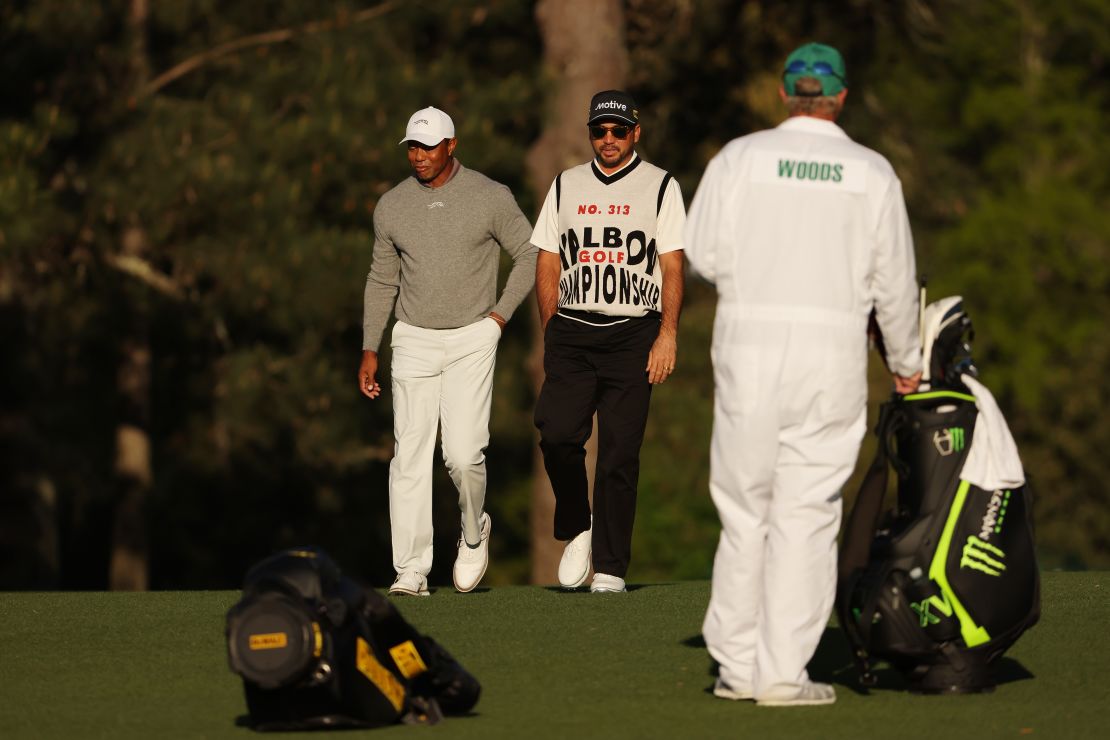The quiet decorum of the Masters was abruptly shattered by a social media frenzy when former world No. 1 Jason Day stepped onto Augusta National wearing a sleeveless vest and baggy pants from Malbon Golf. Dubbed “Sweatergate,” the look ignited an immediate culture war: traditionalists decried the outfit as an affront to golf’s sacred wardrobe, while others cheered it as a necessary injection of flair. At the heart of the controversy were Stephen and Erica Malbon, the brand’s co-founders, who realized the viral storm was exactly where they needed to be. They designed their lifestyle brand specifically to challenge the sport’s “stuffy” and “old and heavy” image, utilizing fashion and celebrity influence to inspire a new generation of players. For the Malbons, the outcry over Day’s attire was not a crisis but a validation of their core philosophy: change only happens when people get uncomfortable.
From Mood Board to Movement: The Malbon Golf Origin
The creation of Malbon Golf was a personal passion project by Stephen Malbon that unexpectedly transformed into a mission-driven business thanks to the keen eye of his wife, Erica.

Stephen, who had established the media brand Frank151, reignited his love for golf after moving to Los Angeles, but found his creative friends dismissive of the sport. They viewed golf as “so stuffy” dueating to its rigid apparel, restrictive rules, and the “anxiety of feeling like you might not fit in.” In 2012, Stephen launched an Instagram account as a personal “mood board” for the sport, filling it with diverse golf imagery and sketches of his now-iconic cartoon character, “Buckets.” The feed steadily gained traction, leading Erica, who grew up around the sport, to recognize its business potential. In 2017, the couple officially launched Malbon Golf, unified by the goal that would become their “star in the sky”: combating golf’s stuffy reputation and inspiring youth participation through fashion.
The Celebrity Weapon: Inspiring Youth Participation
Malbon Golf’s core strategy relies on leveraging high-profile collaborations and celebrity endorsements to bypass traditional golf media and directly influence a younger, style-conscious audience.

The brand has cultivated an impressive roster of partnerships, collaborating with global giants like Nike, Coca-Cola, Formula One, and Tag Heuer. This strategy has successfully attracted a glitzy lineup of stars, with their Los Angeles store quickly becoming a fixture for celebrities. The biggest win came with Justin Bieber, who became a frequent visitor and purchaser, even using the shop’s in-house golf simulator. Erica Malbon explained the rationale behind targeting such figures: “Cultural figures (can) make a bigger impact for inspiring young people to play golf than professional golfers.” The belief is that when a young person sees an admired figure like Travis Scott or Bieber playing golf, the sport instantly becomes cool and accessible, effectively “shredding golf’s ‘stuffy’ image” where professional endorsements often fail.
The Masters Controversy: A Scripted Explosion
The “Sweatergate” incident at Augusta National, while causing shockwaves across social media, was the direct result of a calculated styling choice that ultimately served the brand’s strategic goals.

Stephen Malbon “scripted” ambassador Jason Day’s tournament wardrobe, approving the loose-fitting, non-traditional outfits the golfer preferred. While the founders did not specifically intend for the reaction to be so fierce at the tradition-heavy Masters, the backlash became amplified when Day was paired with Tiger Woods for the first two rounds, putting maximum “eyeballs” on the sleeveless vest. Tournament officials, though minimal in their on-the-ground reaction, politely asked Day to remove the top. The real fallout was online, and Stephen Malbon wholeheartedly embraced it, recalling Oscar Wilde’s adage: “The only thing worse than being talked about is not being talked about.” He estimated that the incident instantly raised the brand’s awareness from 10% to 90% of the golf world, proving the immense value of strategic controversy.
Conditioning the Game: The Iverson Parallel
For the Malbons, the backlash over Day’s attire is simply the latest, necessary step in their aim to “condition” the golf world into accepting—and eventually embracing—new styles and a less formal atmosphere.
Erica Malbon views the controversy as an essential catalyst for evolution, noting, “When people get uncomfortable, change happens.” Stephen draws a compelling historical parallel to basketball icon Allen Iverson, who famously ignored the NBA’s mandatory dress code, opting for a hip-hop style that incurred fines. That defiance, Stephen argues, eventually led to basketball being viewed as a high-fashion runway. By challenging the strict sartorial norms of Augusta National, Malbon Golf is engaging in a similar act of cultural disruption. Their message is clear: without being intentionally disrespectful, the sport of golf “has been poised for a little bit of change” and the movement of a new generation depends on breaking the anxieties and stuffiness associated with traditional golf apparel.




